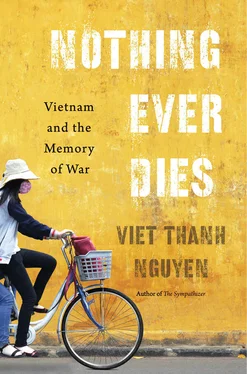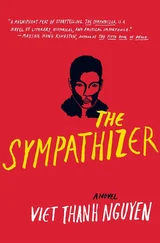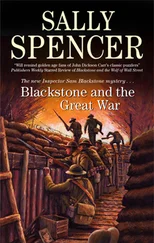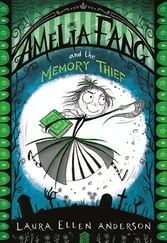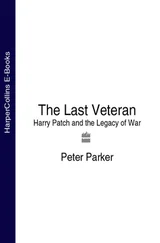is drawn from the merging of my personal memories, media-influenced memories, and Hollywood-fabricated memories to create a surreal landscape memory that is neither fact nor fiction. At the same time I want the series to talk about the struggle for control of meaning and memories of the Vietnam War between these three different sources of memories. I think my concepts of what constitutes memory have changed over the years, from thinking of memory as something concrete to something so malleable. But the one concept I still hold on to is that, because Hollywood and the U.S. media are constantly trying to displace and destroy our memories about the Vietnam War to replace it with their versions, I must keep fighting to keep the meanings of these memories alive. 7
These memories range from the horrific to the reassuring, the aesthetic spectrum for the war stories of Southeast Asians whether in their countries of origin or in their adopted countries. On the horrific end, the most powerful scene from Ham Tran’s epic film Journey from the Fall illustrates something that O’Brien gestures at. In O’Brien’s stories, the job of the living — at least the living writer — is this: “We kept the dead alive with stories.” 8But what if the living are already dead, and the dead are somehow alive? Journey from the Fall examines this convergence of living and dead through the war’s impact on one family after the fall of Saigon. After the husband is sent to reeducation for having been a soldier in the southern army, his mother, wife, and son flee as boat people. In a marginal American neighborhood, they suffer their losses in isolation from Americans and from each other, traumatized by the loss of country and patriarch, as well as the sufferings endured on the boat, which include rape. When the young son accuses his mother of forgetting the father, treating him as if he were dead, she says
Do you know what I’ve been through to be with this family today? Do you think your mother is still alive? She’s dead already. Dead already! I died the day they took your father. I died again out on that ocean, Lai. This person you call your mother is nothing but a corpse, living only to take care of you. But your real mother is already dead, son. I hope you know. She’s dead, son.
Tears do not come to my eyes often, but they did for this scene, the mother weeping at her confession, the son weeping at the revelation. This domestic scene set in a prosaic living room dramatizes war’s dreadful cost for civilians, women, refugees, children, and, ultimately, all those people in living rooms who think they are not at war when their country is at war.
The mother’s speech reveals that beneath the façade of the human lurks the inhuman, the undead among us and within us, which Westerners typically only confront through watching stories of the undead in zombie movies and television shows. As philosopher Slavoj Žižek says, “the ‘undead’ are neither alive nor dead, they are precisely the monstrous ‘living dead.’ ” 9Among the refugees, some are the living dead. If one wants sociological evidence, look at how 62 to 92 percent of Cambodian refugees in America endure posttraumatic stress disorder, or how some of them suffer from a science fictional illness called hysterical blindness, where, for no apparent medical reason, those afflicted cannot see, or how some Hmong refugees, healthy by all appearances, and of youthful age, go to sleep and never wake up, their black hair turned white overnight. 10What has traumatized, blinded, or killed these people? Memories. What turns people into zombies? Memories. Because these people might be infectious and threatening, Americans may wish to quarantine their memories and war stories, their tales of being the living dead, which remind us that the inhuman is present within us. As Žižek tells us, there is a difference between not being human, which is “external to humanity, animal or divine,” and being inhuman, “which, although it negates what we understand as humanity, is inherent to being human.” 11Riffing on Žižek’s insights, critic Juliana Chang says inhuman “implies dread and horror not only because we find it strange but also because we find it overly proximate … the inhuman is the alien that permeates the human, and the human that finds itself alien.” 12This human, xenophobic fear of the alien and the refugee is based not on how they are unlike us, but on how they are too much like us. Not only is their condition something for which we might have some responsibility, but their wretchedness might become ours if something catastrophic happens to us. Even more, as Papageorge’s photos imply, isn’t there something inhuman and monstrous about carrying on our daily business — indeed, in enjoying ourselves — while people die because of our war machine? Do we look that different from zombies in our pursuit of oblivious pleasure? If the victims of a war machine made zombie movies, wouldn’t they cast themselves as the humans and the war machine’s soldiers and citizens as the zombies? Can the war machine’s soldiers and citizens see themselves as zombies, as inhuman? In short, do we who think we are human know that we are also inhuman?
At least some refugees know they are inhuman, the living dead, and perhaps some soldiers do as well, like novelist Larry Heinemann, the war veteran whose novel Close Quarters scarred me at so young an age. He wrote the even more troubling Paco’s Story about a disabled veteran who is the burned, scarred, sole survivor of a company that is wiped out in a massive battle with the Viet Cong. Paco is a drifter who comes into a typical American small town whose citizens look down on him. These are the same people who shouted their support for their troops. The reader’s sympathies are with Paco until near the end, when he remembers the brutal gang-rape his company inflicted on a captured Viet Cong sniper, a girl of fourteen or sixteen years, who killed two Americans. Each of the soldiers line up for their turn to rape her, and when they are done, one of them executes the girl with a bullet to her head. Shortly after the gang-rape, Paco wounds another Viet Cong with a grenade, and then finishes the kill with a knife. The soldier pleads with Paco not to kill him, to no avail. “I am dead already,” the man says, right before he dies. 13Heinemann describes both scenes in excruciating detail, setting the stage for what happens next, Paco reading the diary of a young woman, his neighbor. She has written down her fantasies about making love to Paco, until the moment she imagines his scars touching her. “And then I woke up. I just shuddered.… It made my skin crawl.” 14By the next page, the novel is over. Paco leaves this typical American town to drift again. He cannot stand what we witnessed, his forced recognition of his inhumanity, his skin-crawling monstrosity, himself as alien. He removes himself but small town America has already cast him out, sensing the dis-ease he carries after having fought a dirty war in small town America’s clean name.
True war stories insist on this dreadful knowledge of the inhumanity that exists within the human, and the humanity of those who appear inhuman. But this is a hard tale to recount, especially for tellers of true war stories dealing with women, children, refugees, and banalities, in particular the banality of inhumanity. Unlike soldiers turned artists, these tellers have a heavy burden to bear in challenging the identity of the conventional war story and insisting that a war story is about many different things and people, not solely soldiers. Recasting war’s dramatis personae faces resistance from audiences who believe that war stories are about soldiers, men, machines, and killing. These tellers also struggle, like all other artists, with the judgment of their critics. These criticisms, while subjective, are often pronounced in objective ways, as when the glossy magazine Entertainment Weekly gave a B+ to Kao Kalia Yang’s The Latehomecomer. This is a good grade, but neither great nor perfect, two rungs below the top grade of an A in the American system. 15At an artist’s talk, the author brought up this matter of grading and I made a note of it, for the judgment clearly bothered her. 16I sympathize, and yet this is how aesthetic judgment often works, albeit not usually in such a blunt way that reveals how aesthetic judgment is similar to the classroom judgment that many artists also exercise in their function as teachers. Ironically, the professor and authority figure who objectively grades her or his students with blithe confidence may suddenly feel, on being evaluated in less than stellar ways by students, deans, peers, and critics, that these assessments are rather subjective.
Читать дальше
